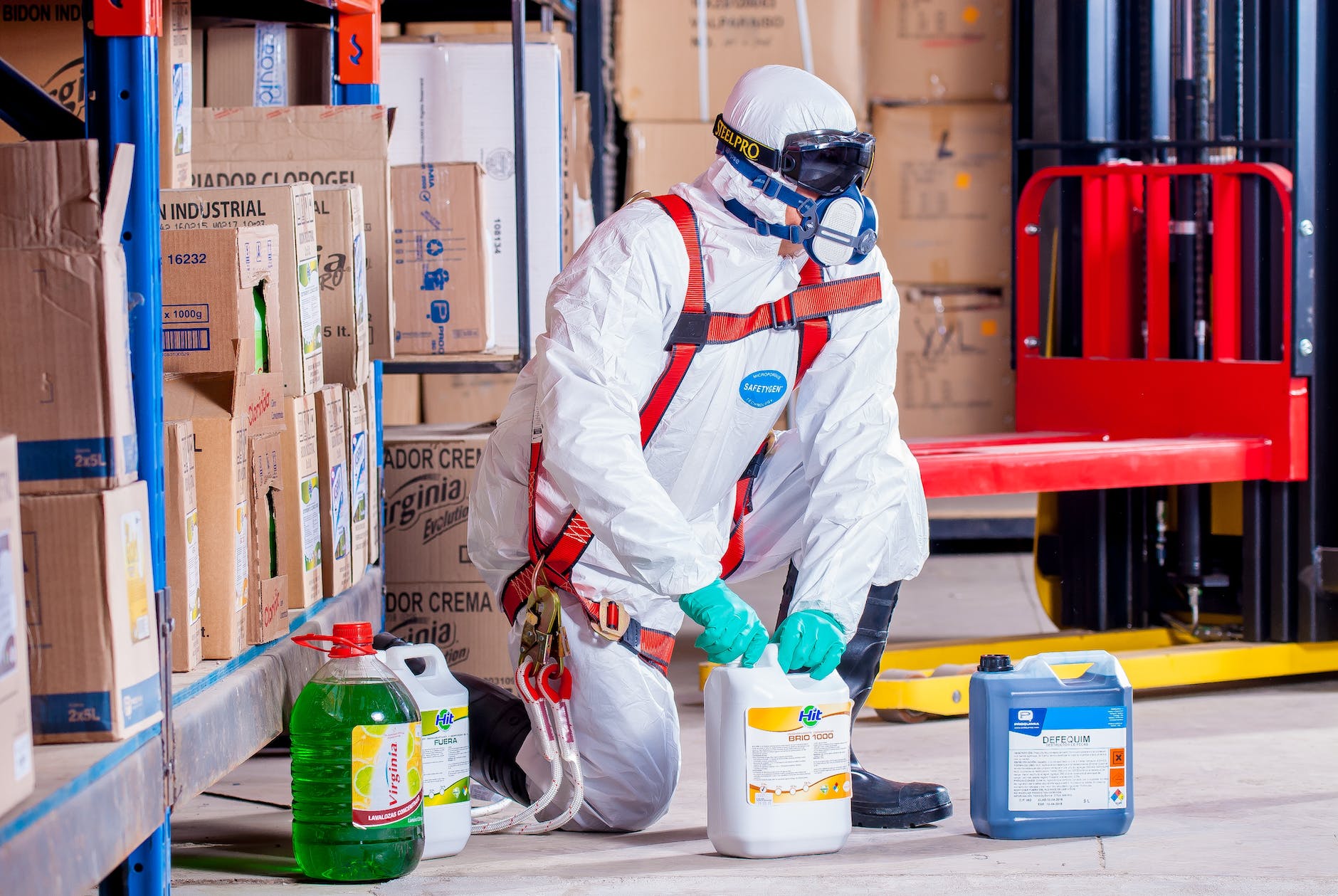
Chemical Safety | Chemical Hazards and Precautions | Types of Chemical | Interview Q/A | Download PPT
Chemical safety refers to the practices and protocols put in place to prevent accidents, injuries, or exposure to hazardous substances in various settings like laboratories, industries, and households.
Chemical hazards refer to the risks associated with exposure to various substances that can cause harm to health, the environment, or property. Here are different types of chemical hazards:1. Toxicity:
- Description: Chemicals that are toxic can cause harm or adverse effects when inhaled, ingested, or come into contact with the skin or eyes.
- Example:
- Arsenic: Found in pesticides, can cause poisoning and long-term health issues.
- Lead: Found in old paint, can lead to neurological damage.
2. Flammability:
- Description: Substances that can easily catch fire or ignite, leading to fires or explosions.
- Example:
- Gasoline: Highly flammable, used as a fuel but can cause fires if mishandled.
- Acetone: Commonly used as a solvent, highly flammable in its liquid state.
3. Corrosivity:
- Description: Chemicals that can cause damage or destruction to materials or living tissue upon contact.
- Example:
- Sulfuric Acid: Used in manufacturing, can cause severe burns on contact with skin.
- Hydrochloric Acid: Found in cleaning products, can corrode metals and cause skin irritation.
4. Reactivity:
- Description: Chemicals that can react violently with other substances, leading to explosions or the release of toxic gases.
- Example:
- Chlorine Gas: Used in various industries, can be toxic and reactive, causing respiratory problems.
- Potassium Permanganate and Glycerin Reaction: Can cause spontaneous ignition.
5. Biohazards:
- Description: Chemicals that can pose a threat to living organisms or the environment.
- Example:
- Pesticides: Used in agriculture, can harm non-target organisms and contaminate the ecosystem.
- Chemicals used in Pharmaceutical Research: May have adverse effects on laboratory animals or the environment if improperly handled or disposed of.
6. Asphyxiant Hazards:
- Description: Chemicals that displace oxygen in the air, leading to suffocation.
- Example:
- Carbon Dioxide (CO2): In high concentrations, can cause asphyxiation by reducing available oxygen.
Identifying and understanding these chemical hazards is crucial in implementing safety protocols, proper handling, storage, and disposal of hazardous substances to prevent accidents, protect health, and minimize environmental impact.Precautions to Ensure Safety:
- Conducting risk assessments before handling chemicals.
- Using appropriate personal protective equipment (PPE) like gloves, goggles, and lab coats.
- Proper ventilation in work areas.
- Labeling chemical containers clearly.
- Training employees on safe handling and emergency procedures.
- Regular maintenance and inspection of equipment.
Here are different types of chemicals along with examples:1. Organic Chemicals:
- Example: Ethanol (C2H5OH) – Found in alcoholic beverages, used as a solvent and in fuel.
- Description: Derived from living organisms, these compounds contain carbon and typically have covalent bonds.
2. Inorganic Chemicals:
- Example: Sodium Chloride (NaCl) – Common table salt used in cooking and various industrial processes.
- Description: These compounds lack carbon and are often minerals or salts.
3. Toxic Chemicals:
- Example: Mercury (Hg) – Found in some thermometers and industrial processes, harmful if ingested or inhaled.
- Description: Substances that can cause harm to living organisms upon exposure, even in small amounts.
4. Flammable Chemicals:
- Example: Propane (C3H8) – Used as a fuel for heating and cooking.
- Description: Substances that can ignite and burn easily in the presence of a flame or spark.
5. Corrosive Chemicals:
- Example: Sulfuric Acid (H2SO4) – Used in batteries, manufacturing, and cleaning agents.
- Description: Substances that can cause damage or destruction to materials or living tissue upon contact.
6. Volatile Organic Compounds (VOCs):
- Example: Benzene (C6H6) – Found in gasoline, used in the production of plastics and synthetic fibers.
- Description: Organic compounds that easily evaporate into the air and can contribute to air pollution.
7. Hazardous Air Pollutants (HAPs):
- Example: Formaldehyde (CH2O) – Found in building materials, used in adhesives and coatings.
- Description: Chemicals known to cause or suspected of causing adverse health effects and environmental damage when released into the air.
Chemical-Safety-Hazards-and-Precautions-Types-of-Chemical-Interview-Questions-and-Answers (1)Download
What is the First Step in a COSHH Assessment?
What is the Number 1 Golden Rule in COSHH?
What Are the Main Principles of COSHH?
Interview Questions and Answers:
- What are the primary hazards associated with chemical exposure?
- Answer: Chemical exposure can lead to various hazards such as toxicity, flammability, corrosiveness, and environmental harm.
- How do you ensure chemical safety in a laboratory setting?
- Answer: By implementing strict protocols, including risk assessments, proper labeling, adequate ventilation, and mandatory use of personal protective equipment.
- What steps would you take in case of a chemical spill in the workplace?
- Answer: Immediately contain the spill, evacuate the area if necessary, and follow established procedures for cleanup while wearing appropriate protective gear.
- Describe the importance of MSDS (Material Safety Data Sheets) in chemical safety.
- Answer: MSDS provides crucial information about chemical properties, hazards, handling, storage, and emergency procedures, ensuring safe usage and handling of chemicals.
- How do you differentiate between a flammable and a corrosive chemical?
- Answer: Flammable chemicals can easily catch fire or ignite, while corrosive chemicals can cause damage upon contact, often eating away at surfaces or causing burns on skin.
Remember, in interviews, it’s essential to provide specific examples from your experience and highlight your commitment to safety protocols and regulations. Safety in handling chemicals is paramount, so emphasizing your adherence to best practices is key.
























